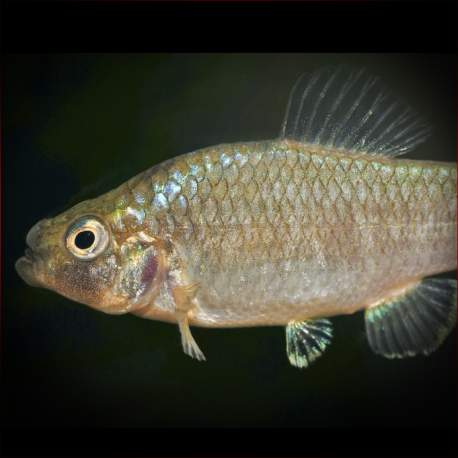More info
Datasheet
| Maximum Size | 3.6cm / 1.42inches |
General Description
The Durophage Pupfish, scientifically known as Cyprinodon Brontotheroides, was previously referred to as C. sp. ‘durophage’ or C. sp. ‘bozo’ before its official description. This species exhibits unique anatomical features such as an anterior maxillary head process that extends beyond the dentigerous arm of the premaxilla, resulting in a shorter upper jaw compared to other Cyprinodon species. The nasal bones of the Durophage Pupfish form a more acute angle with the neurocranium's dorsal margin.
Aquarium Setup
To set up an aquarium for the Durophage Pupfish, it is crucial to mimic its natural habitat conditions. The species does not have specific habitat preferences beyond typical littoral habitats but is commonly found in wigeongrass (Ruppia maritima) patches. Aquarists should provide sufficient space for swimming, as these fish are known to inhabit midwater depths of 0.5 to 1 meter.
Behaviour
Males of the Durophage Pupfish exhibit territorial behavior, guarding breeding territories throughout the year, with peak breeding activity observed during the spring months. They do not display particular habitat preferences beyond typical littoral habitats. The species coexists with congeners C. variegatus and C. desquamator in some environments.
Feeding and Diet
The Durophage Pupfish is a specialized durophage, preying on hard-shelled invertebrates such as gastropods and ostracods. Physical adaptations for this diet include modified jaw morphology that allows for increased biting force to crush shells.
Reproduction & Dimorphism
Breeding in the Durophage Pupfish is observed year-round, with males displaying metallic blue speckling on the anterodorsal region and a black margin on the caudal fin. Nuptial males may also exhibit orange ventral coloration. Females and juveniles are distinguished by a black and white ocellus on the dorsal fin.
Habitat and Distribution
This species is endemic to San Salvador Island in the Bahamas, where it inhabits six hypersaline lakes: Crescent Pond, Osprey Lake, Oyster Lake, Little Lake, Wild Dilly Pond, and Moon Rock Pond. The Durophage Pupfish is sympatric with C. variegatus in all six lakes and with C. desquamator in four of them. The fish can adapt to various environments but displays specific resource utilizations in certain locations, with adaptations to unique ecological niches.

